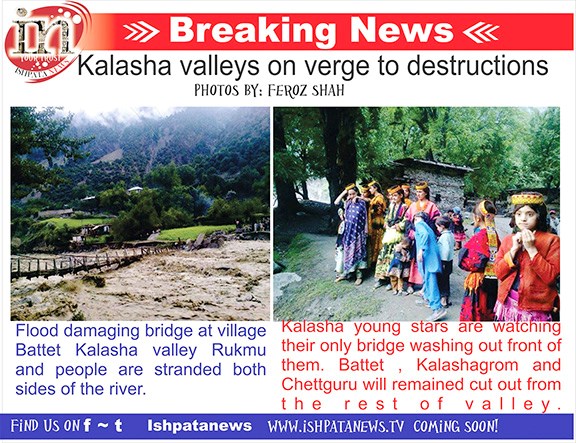Between 1973 and 1990 I spent two years doing anthropology research in three narrow valleys nestled high in the Hindu Kush mountains on the Pakistan/Afghan border. These valleys are home to an ancient, pre-Islamic tribe called the Kalash’a.
Saifullah Jan, the first Kalash’a to ever receive a Western education, was about 17 when I first met him back in the early 1970s. In August 2010, I received a panicked phone call from Saifullah, now a respected Tribal Elder, telling me that the Kalash’a valleys had been hit by a devastating flood. This terrifying flood was caused by melting glaciers high in the Hindu Kush. Glacial slumping engorged local rivers that then roared down upon Kalash’a settlements -- destroying homes, barns, bridges, hydro-electric plants, roads, kilometres of irrigation channels, and water-driven grinding mills.
Living as subsistent agriculturalists and transhumant herders, this Indo-European tribe of about 3,000 people have a miniscule carbon footprint but, like so many marginalized people today, are experiencing the full force of global climate change.
Saifullah asked for help. So in September 2010 we held a fundraiser at which many friends, family and Bowen Islanders gave generously. One 12-year-old Islander asked his friends to donate rather than bring presents to his birthday. Those kids raised about $130 which we sent along with another $3,000 in donations. Via Saifullah, the villagers immediately sent a huge thank-you to all the Bowen Islanders who contributed. With these funds the Kalash’a built several large flood barriers -- heavy wire-mesh cages packed with boulders on the river above Balanguru, the uppermost village in Rombour valley.
I talk regularly by phone with Saifullah, but 10 days ago I received several distressing calls from him. Lashing rain storms had again turned their rivers into raging torrents, propelling boulders the size of cars downstream. The good news, Saifullah told me, was that the protection barriers built with funds sent by Bowen Islanders had saved Balanguru village and the bridge below.
But when this year’s floods hit, the Kalash’a were harvesting their wheat crops and huge sections of ripened wheat fields caved off, crashing down into the raging river below. In this year’s floods, all the irrigation channels the length of Rombour valley and the hydro-electric plant were destroyed. Saifullah says 50 families in the Valley are severely affected.
The Kalash’a valleys are just north of Swat, home of the world’s youngest Nobel prize winner, Malala Yousafzai, shot by the Taliban in 2012 for attending school. The Kalash’a are one of Pakistan’s most threatened minority groups. Calling them infidels, the Pakistani Taliban have put a ‘fatwa’ out against the Kalash’a, ordering them to ‘convert to Islam or be killed’.
Living for over 1,000 years in their narrow rugged valleys, the Kalash’a have nowhere to move. So again they’ve picked themselves up and started to repair the damage. They’ve started to rebuild the irrigation system and have decided to buy cement to reinforce the flood barriers above the uppermost village. We are again raising funds to help them. This is a situation of “direct giving” -- nothing is subtracted for administration fees -- every cent raised goes directly to the Kalash’a.
If you are able to help, please get in touch with me, Gillian Darling Kovanic, at 947-2914. I am sending all donations via Western Union to Saifullah Jan who’s organizing his tribe’s flood relief efforts.
Many thanks in advance for any assistance you are able to give.



